The gardens at Holcombe Court, where the team was told to 'plant whatever you like, as long as it's not pink'
Restoration of the historic gardens at Holcombe Court, Devon, has been a slow and thoughtful process that harnessed the individual qualities of the entire garden team to great effect. Tiffany Daneff paid a visit; photographs by Paul Highnam for Country Life.
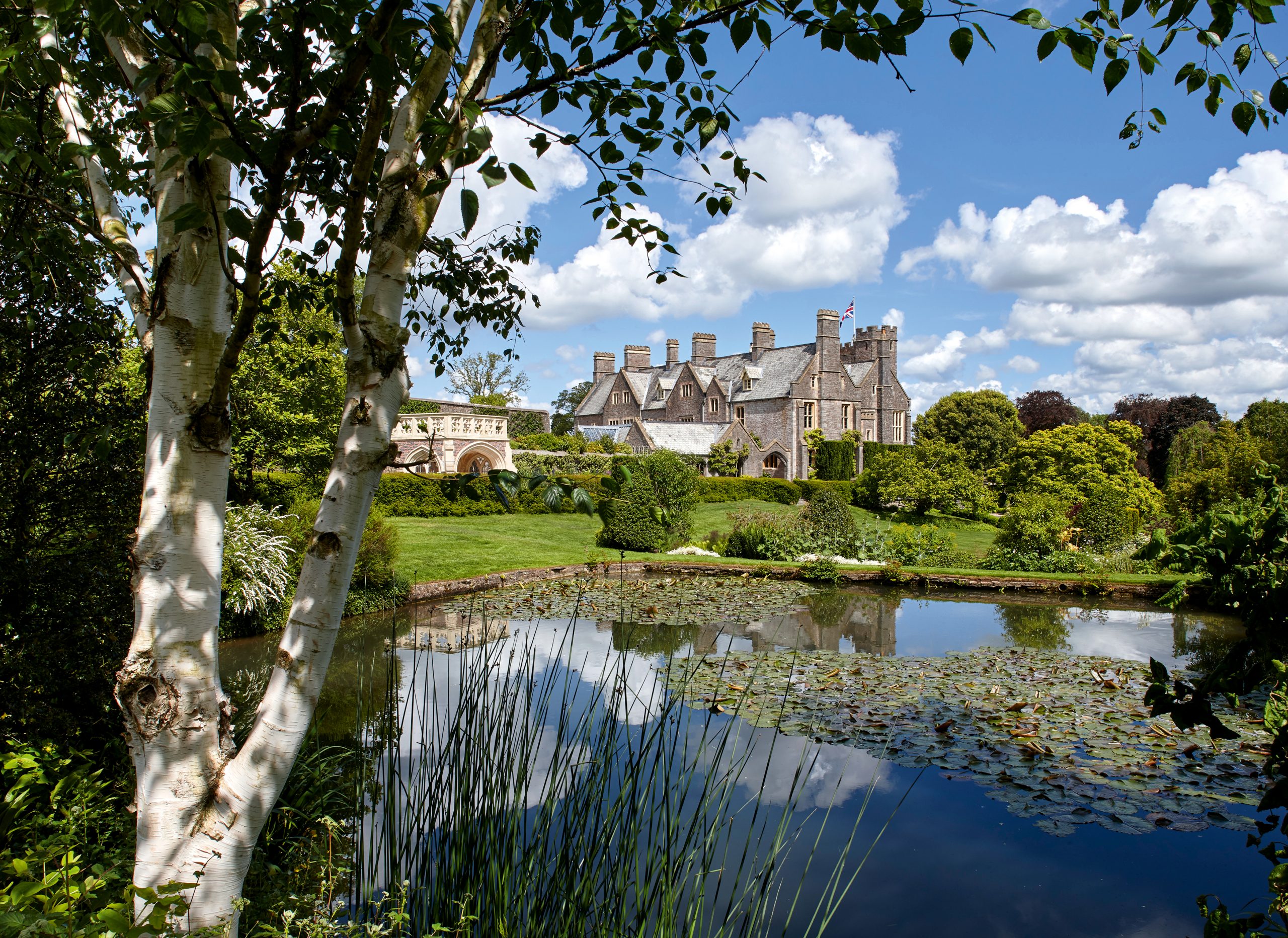
'No pink’ was the sole demand made by Nigel Wiggins of his new head gardener, Kathy Worner, when she joined him 20 years ago. This was soon after he had moved into Holcombe Court, the finest Tudor house in Devon, the subsequent extensive restoration of which was covered in Country Life last year.
Miss Worner had worked for the previous owners, but had left briefly because there had been only one herbaceous border then, offering little to exercise her imagination, nor, indeed, her many as-yet-untapped talents. When she realised that Mr Wiggins was as serious about developing the garden as he was about restoring the house, she soon agreed to return, at first part time and then, as the project developed, for more hours.
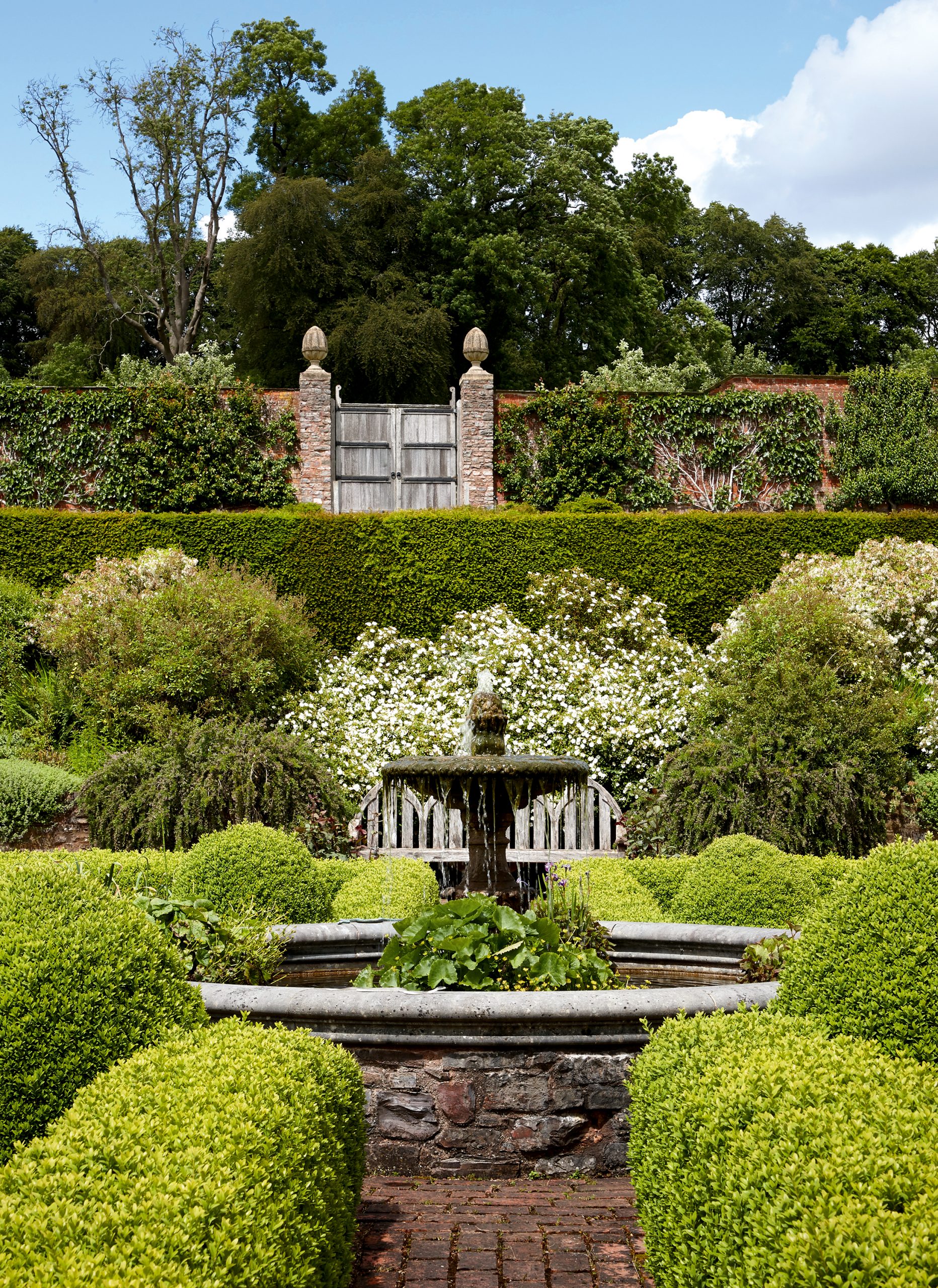
Today, there are half a dozen talented part-time gardeners working in the seven acres of gardened ground within the 99-acre estate. Each has their specialisation and has the freedom to express themselves.
The roof of the Tudor Gatehouse Tower, with All Saints Parish Church and the village of Holcombe Rogus behind, is the perfect spot from which to understand the layout of the garden. This dates back to the 16th century, but little of the Tudor parts remain. In his book on Holcombe Court, Charles Scott-Fox quotes research that suggests there would have been walled courts, enclosures and gardens designed to be seen from the upper windows of the house.
In early summer, the impression is of sap-filled verdancy as the land sweeps down from the top of the coombe where springs rise up in the depths of The Grove. This small woodland, originally part of an 18th-century pleasure garden, had become seriously overgrown.
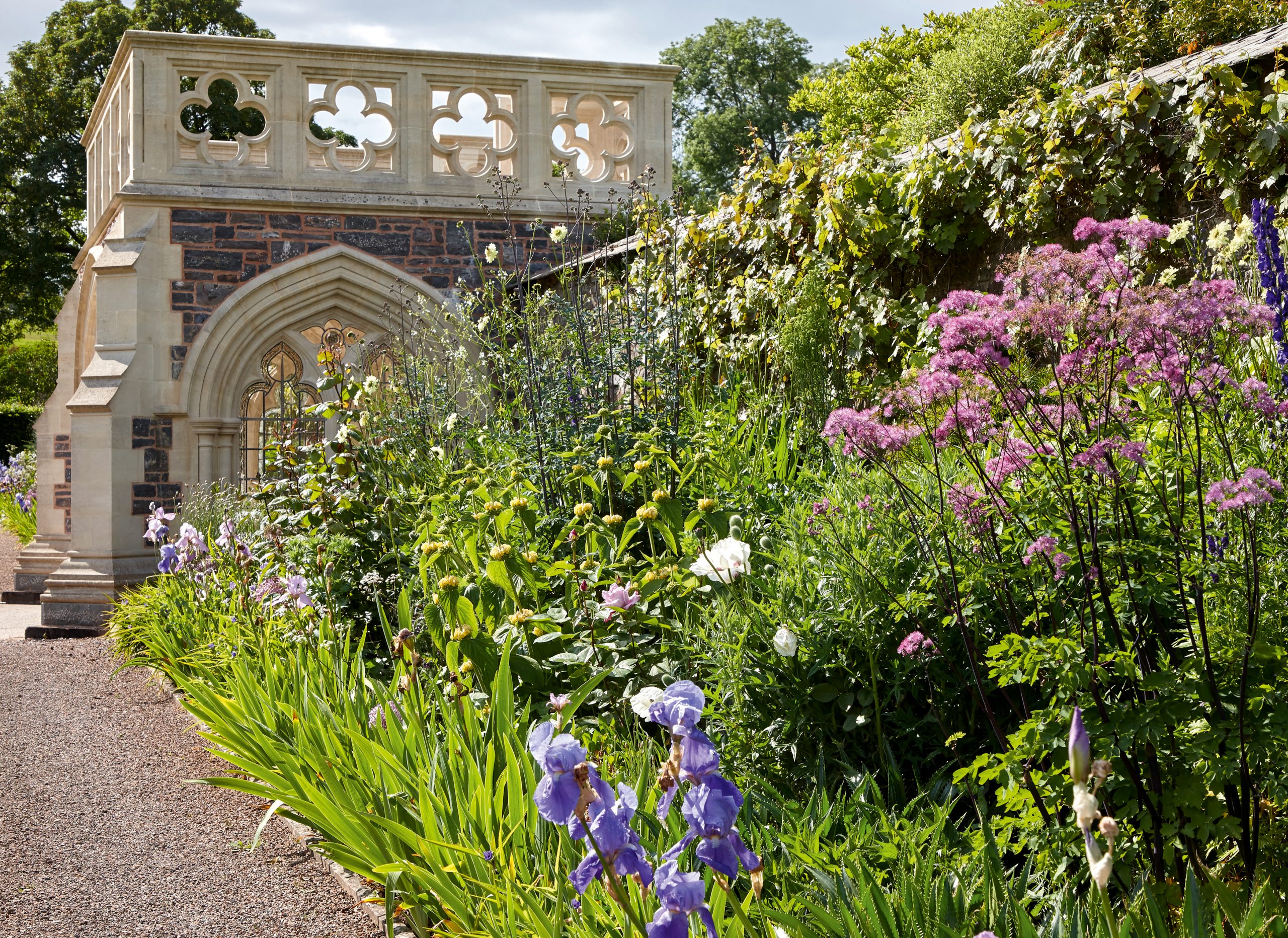
Light now reaches the woodland floor and the paths loop around newly dug ponds and a bog garden. In spring, the whole scene is white, first with snowdrops and then with wild garlic.
The springs are channelled into a rill that flows through the centre of the lawn, past streamside plantings and a Victorian rockery, feeding four trout pools before it crashes into a 19th-century brick-lined outflow.
Sign up for the Country Life Newsletter
Exquisite houses, the beauty of Nature, and how to get the most from your life, straight to your inbox.
Nicknamed Hagrid’s Hole, this hollow is now verdant with Hydrangea petiolaris, self-seeded hart’s tongue ferns and masses of wild strawberries. Old stands of bamboo and overgrown laurels have been brought back under control and Miss Worner is shaping the evergreens to create secret routes into the planting, making a feature out of what had been an eyesore.
The two larger fishponds at the bottom of the slope were made in Tudor times and the higher pools were dug sometime between 1821 and 1838, probably by Peter Frederick Bluett, who inherited the court in 1824. Since Mr Wiggins’s arrival, all four ponds have been dredged, repaired and replanted.

The balance between the simplicity of the lawns, with their mature magnolias (alas, pink, not white, but nicely set up with a neat under-planting of ivy, ferns and hellebores) and an elderly cedar of Lebanon, and the intensive planting in the borders, rockery and parterre is well judged. Sadly, the cedar lost its top in a storm, but three young specimens are waiting in the wings to take over.
The Victorian rockery has been cleared and much of the original planting removed, leaving only the better shrubs, a golden Irish yew and a red smokebush among them. With reinforcements — several Irish yews, ferns, hollies, macleaya and other evergreens — sensibly, the height and depth of the rill-side plantings has been built up.
The old walled garden sits on the upper slopes above the lawn, facing south-west to catch the warmth of the sun. The space is too large for it all to be used productively, so it has been divided longitudinally, with a newly developed box parterre on the lower part where the original Tudor knot garden may have been sited.
In summer, the parterre is in-filled with herbs and vegetables, but, in winter, the beds are left bare to accentuate the structure.
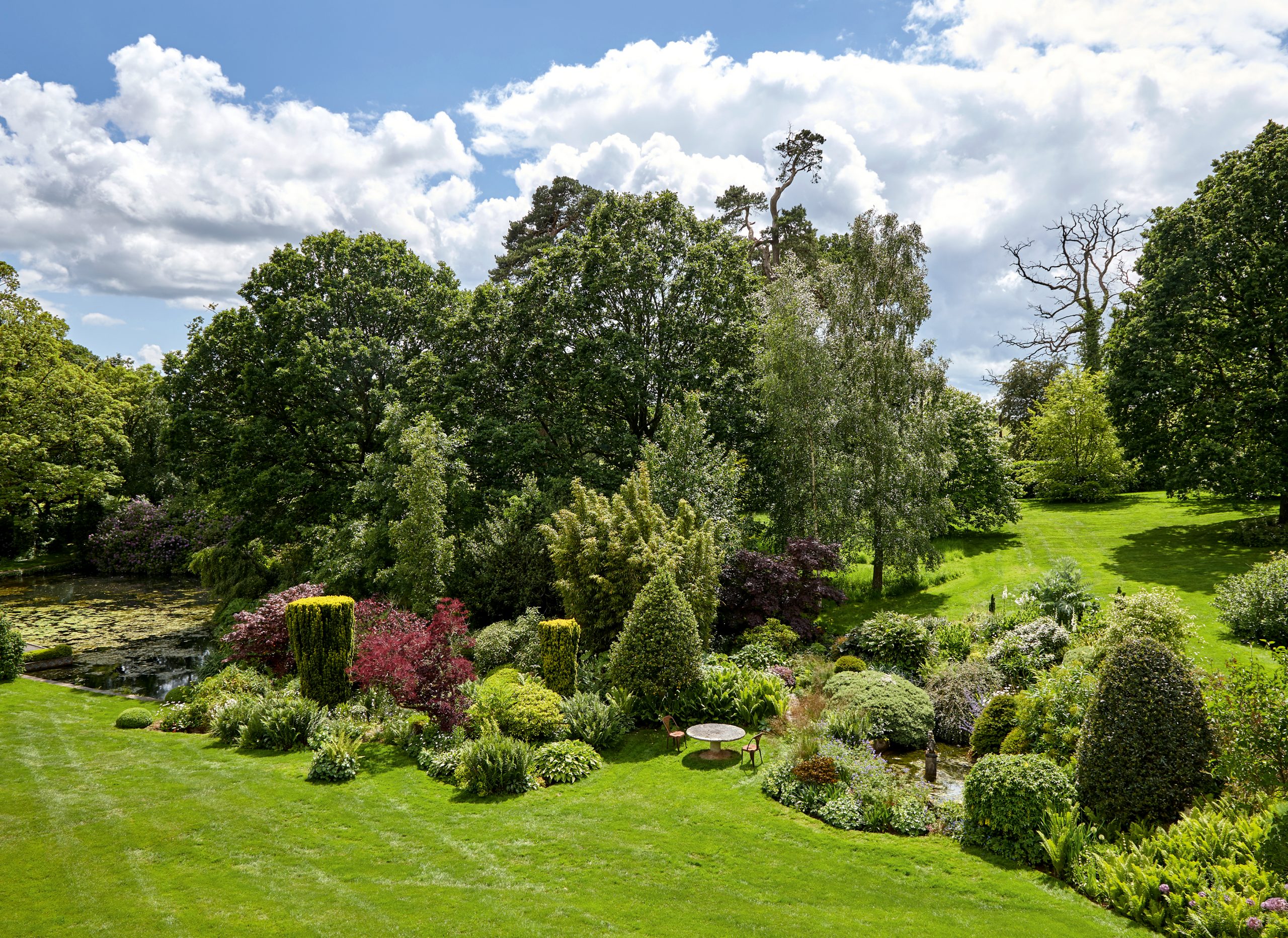
On the upper level, enclosed by wall-trained figs, quince, cherries, plums and pears, is a new area of low topiary set into grass.
The young yew is being clipped by Miss Worner to create a central Tudor rose surrounded by other forms. It’s shaping up to be an excellent solution for how to use the space and is emblematic of the ethos at Holcombe Court, which is all about encouraging individual creativity, from commissioning a local joiner to make the ingenious duck house that wraps around the weeping willow in the lowest fish pond to giving the training and maintenance of the apple tunnels to one gardener, whose subsequent commitment shines through in the beauty of the boughs.
Inspiration for the garden’s restoration has come from joint visits to nearby gardens, such as Forde Abbey and Montacute, but most ideas have emerged from spur-of-the-moment conversations and as a response to the landscape and the spirit of the place.
Strategic thoughts, says Mr Wiggins, come from Miss Worner, who will exclaim: ‘Hey Nigel, come and look at this.’ Over the years, ‘this’ has covered many things, for example, reclaiming the ground on the far side of the ponds.
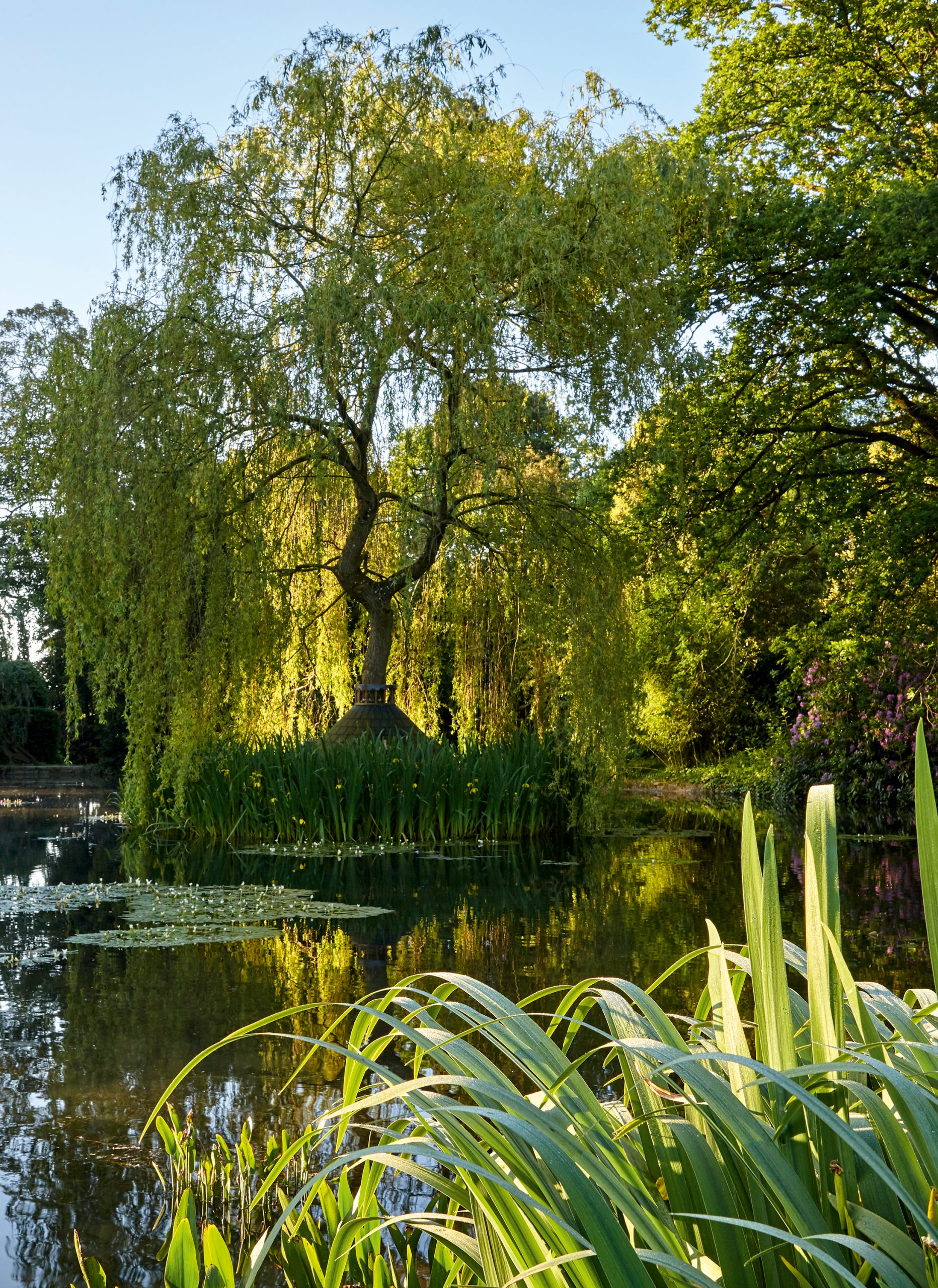
In Victorian times, this had been an orchard and greenhouses, but, more recently, had been fenced off for ponies. Miss Worner pulled up the fences and planted the banks of the ponds, providing a much more satisfying balance to the garden.
The two lines of beech cubes that now lead from the main herbaceous border up towards the new tennis court below The Grove were also her idea. These are extended via a hornbeam avenue to a broad beech hedge that hugs steep banks on three sides of the tennis court, descending in a satisfying sweep of green. To the right are pleached hornbeam, cut into windows, giving a glimpse of sheep grazing in the valley.
As has much at Holcombe, this section has developed naturally, one bit at a time. The result is a feeling of ease, with Mr Wiggins’s enjoyment of architectural forms articulated in varying shades of green, which perfectly suits this part of Devon.
‘The great thing about working with Nigel,’ Miss Worner says, ‘is how he brings out the best in people.’ He has also made her a new ‘Victorian’ greenhouse and a fine potting shed with a wooden sink that is kinder to vases than enamel or metal.
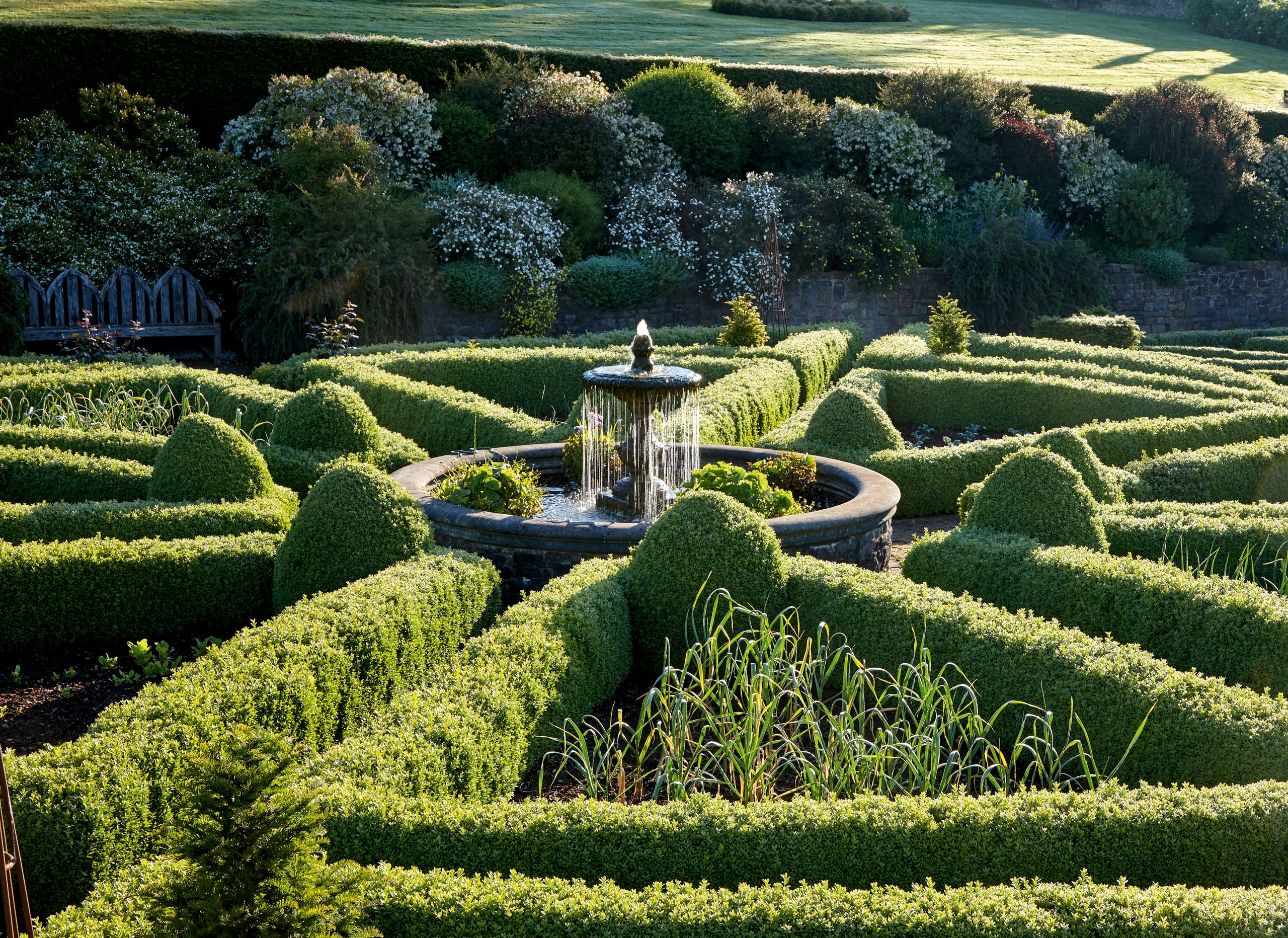
There is always a new project on the go. In front of the Tudor house, the existing raked gravel feels sterile, so it will one day be replaced with cobbles. To further relieve the severity of the grey-stone façade, Mr Wiggins suggested growing yew against the walls.
In his mind’s eye, this would be clipped straight, but his head gardener wants to shear it into softer shapes. Or, as they both say at the same moment: ‘We’re going to blob it.’
Together, they agreed that the main herbaceous border below the walled garden needed to be deeper, which has allowed for more structural plants at the back, as well as extending the season.
The new Gothic-style pavilion positioned in this border has been executed with extraordinary care, as have all such projects. Its pillars support a hand-carved vaulted stone roof that itself supports a viewing platform, from where one looks out over the lawns.
Quatrefoils are carved into the stone balustrade and the arched windows of the pavilion are fringed with a monochrome decoration of acanthus in an echo of the windows in the Great Hall.
Miss Worner has filled the generous borders with herbaceous perennials. Aconitum, eryngiums, acanthus (picking up the frieze on the house), catananche, thalictrum, cimifuga and echinops, phlox, lilies and blood-red roses give way to late colour from echinacea, helianthemums, rudbeckias and Crocosmia ‘Lucifer’.
Pretty much everything can be grown in the neutral to slightly acid soil. Everything, that is, except pink.
The gardens of Holcombe Court, Devon, will host the Holcombe Rogus Church Fête, on July 10, 2pm–5pm
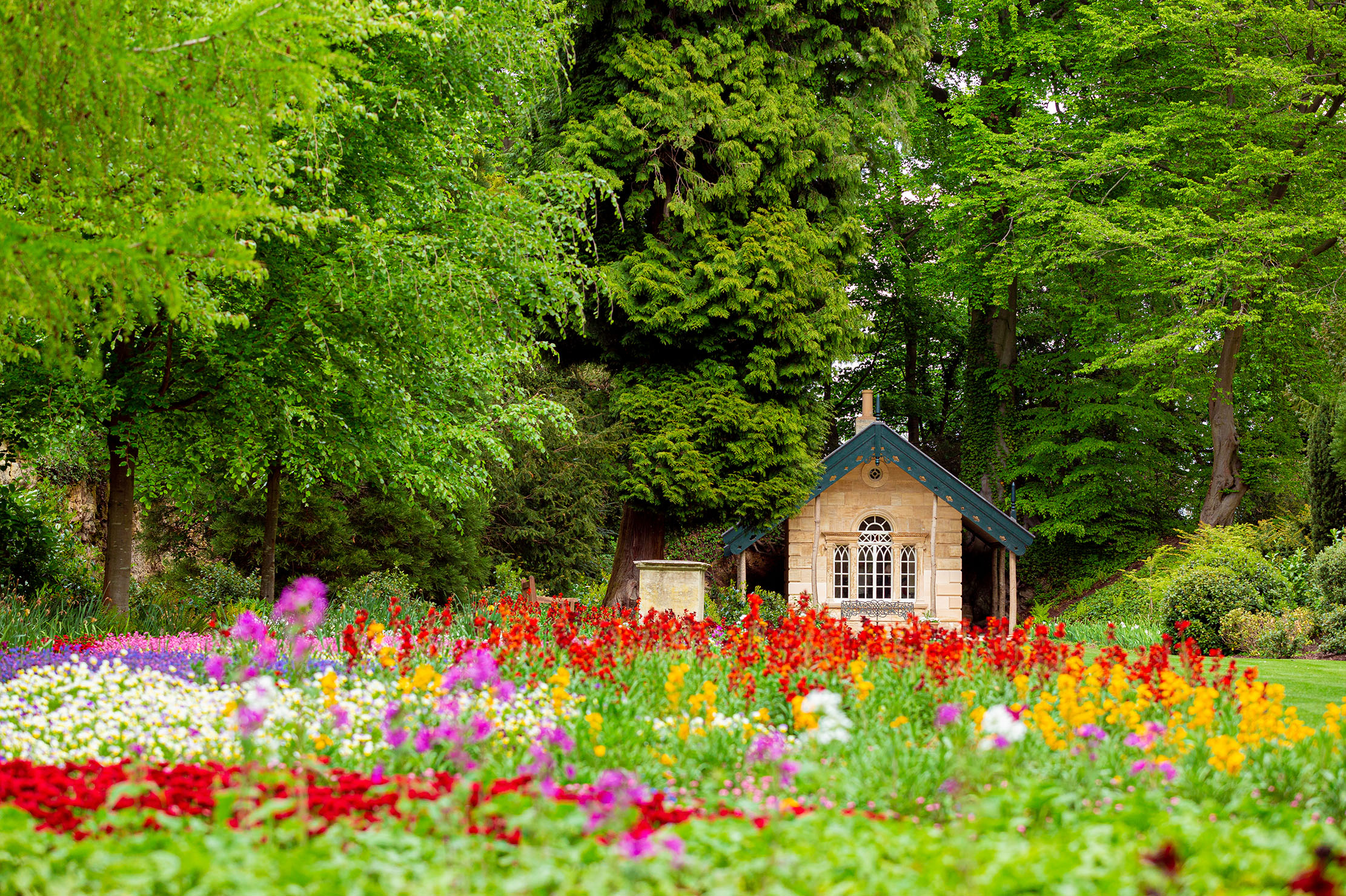
Brodsworth Hall's 150-year-old follies — restored, reopened and remarkable
Brodsworth Hall's gardens and unusual follies have been restored during lockdown. Annunciata Elwes takes a look.
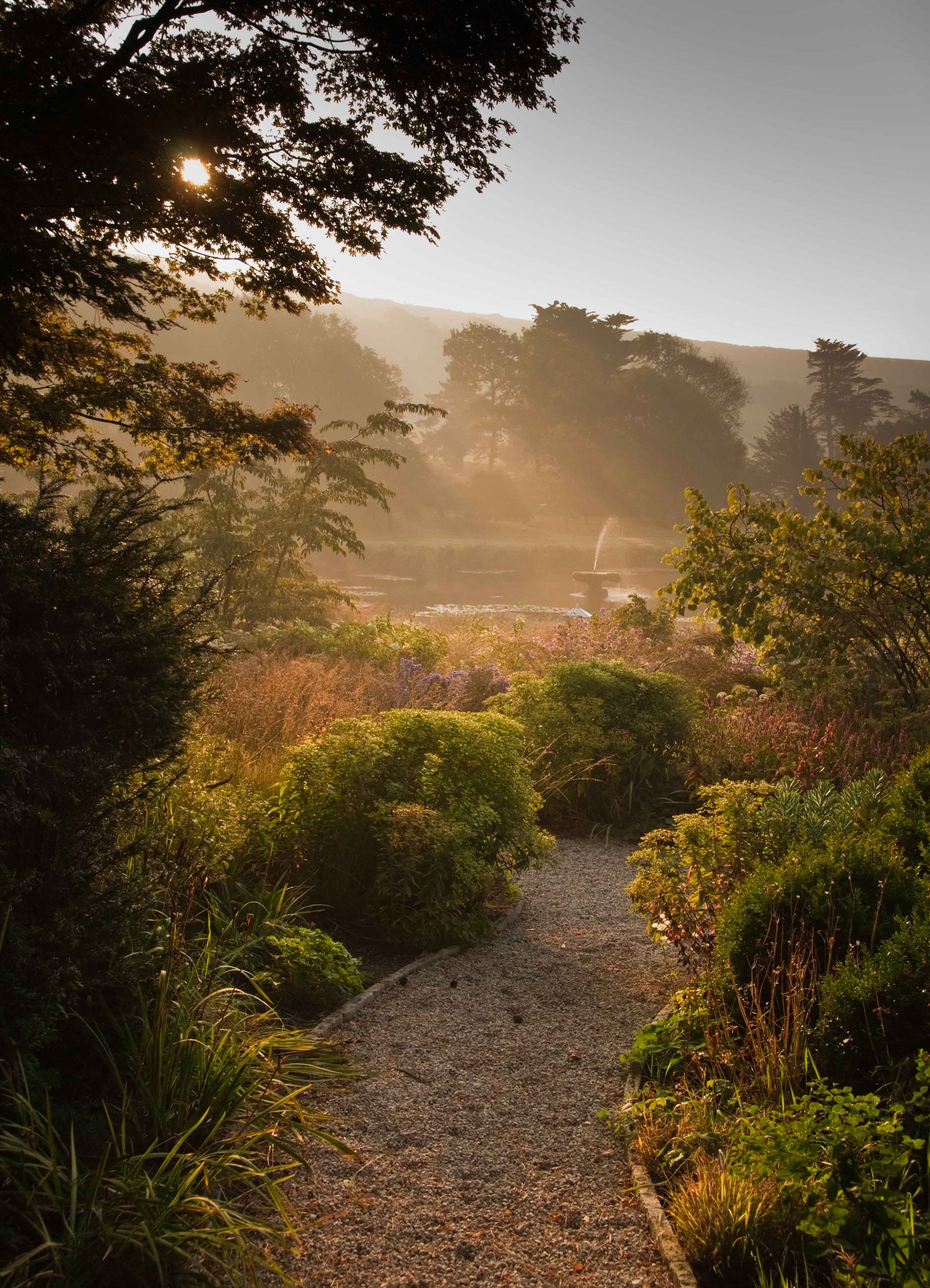
The best new gardens opening to the public in 2021 under the National Garden Scheme
The NGS was hit by Covid-19 last summer, but the signs suggest that the 2021 National Garden Scheme openings should

